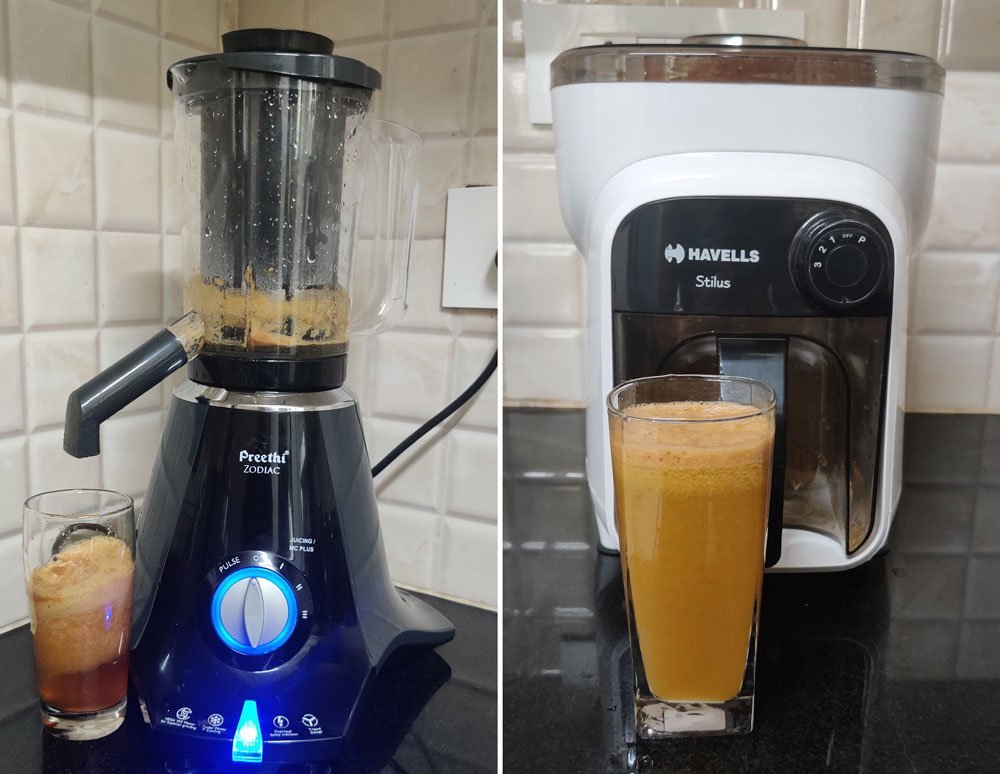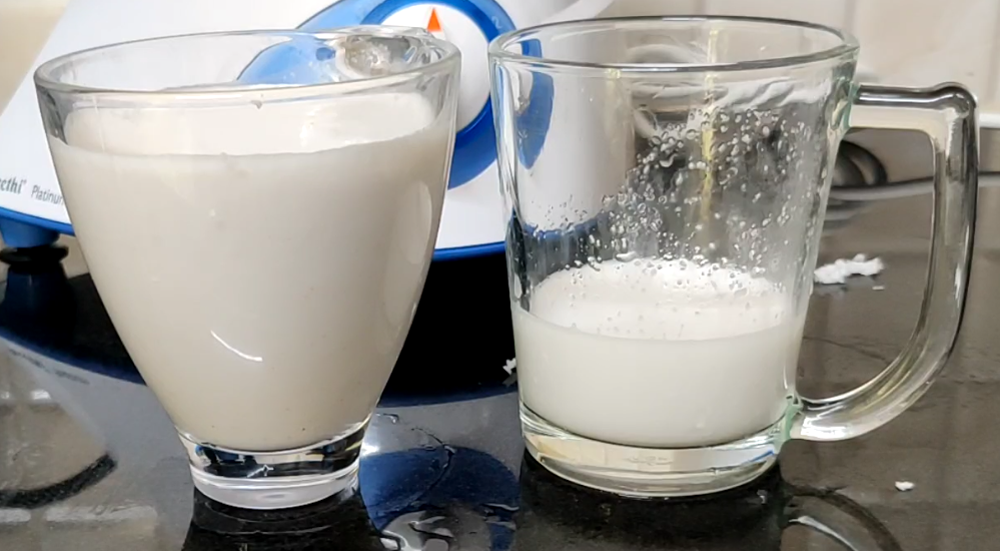In the early 2000s, most mixer grinders came with just 3 jars- one for chutney, one for multipurpose grinding and the largest one for wet grinding. But of late, you find that most mixer grinders come with an additional fourth jar, which is a juicer jar. They usually cost about Rs. 500 more compared to the same models that come without the juicer jar. So, are they worth it? Let us explore.
Functions of Juicer Jar
The juicer jars typically have a polycarbonate body and a plastic lid. At the centre of the jar, it has a cylindrical ring with a sieve that separates the juice from the pulp. In Bosch, Butterfly and a few other models, the lid has an opening through which you can add the fruits while juicing. This is much better compared to what Preethi and Philips offer.
The juicer jar doesn’t merely make juice. If you remove the cylindrical sieve at the centre of the jar, you can use it to make smoothies, shakes and even for wet grinding. So, in effect, you get an additional jar.
Juicing Efficiency
A centrifugal juicer consists of an extraction blade with a mesh filter that spins at a high speed of 15-20000 RPM. The blade shreds the ingredients and the juice passes through the mesh filter, while the pulp gets thrown in the juicing chamber and into the pulp container.

A juicer jar however does not have an extraction blade. It has a blending blade that has 6 prongs. The sieve around it is stationary unlike the mesh filter in the centrifugal juicer. Also, in most mixer grinders from Preethi and Philips, the plastic ring is tall and the sieve is just an inch tall.
As a result, the juicer jar has a comparatively poor juice yield for most fruits. The exceptions are watermelon and cucumber which has high water content. In most cases, the pulp left at the centre of the juicer jar retains a lot of juice. When we tried extracting juices from pomegranate, apple, pineapple etc, the yield was too low and the pulp was more wet compared to centrifugal juicers. Also, the juice you get will have a lot of froth, which is not really pleasant.
Related reading: How To Make Juice In A Mixer Grinder?
3-in-1 Extraction
Most juicer jars are marketed as a 3-in-1 extraction jar capable of juicing, blending and extracting coconut milk and tamarind juice.
While the juice yield of watermelon and cucumber are acceptable, the quantity of coconut milk that you can extract is simply pathetic. The coconut at the centre retains a lot of milk. You can see in the below image how much coconut milk was extracted using the extraction jar. And on the right, you can see the leftover milk in the crushed coconut that we were able to extract by passing through a sieve.

So, as you can see, extracting coconut milk in a juicer jar means double the effort and more dishes to wash. Rather, grinding it in the chutney or multipurpose jar and passing it through a sieve is far more efficient and quick.
As for tamarind juice, we haven’t been able to understand the need for a mixer grinder for extracting tamarind juice! All you have to do is soak the tamarind in lukewarm water for 10-15 minutes, squish it so that the tamarind juice gets extracted. Ideally, store tamarind in an airtight container in the kitchen cabinet. Preferably, avoid storing it in the fridge as the tamarind will get hard. If you insist to store it in the refrigerator, soak the tamarind in hot water for 10-15 minutes and you can extract the juice easily.
You may also like our article on Best Hand Blenders In India
Is A Juicer Jar Worth It?
A juicer jar is fairly good for watermelon and cucumber. It works decently with pomegranates too. And it takes much lesser space compared to a centrifugal juicer or a cold press juicer. But is not recommended for vegetables, leaves and fruits like apples. Also, it is not useful for extracting coconut milk and tamarind juice.
If you are looking for a juicer jar that you may use just once in a while, then, by all means, go ahead with it. But, if you plan to make juice on a regular basis, a centrifugal juicer or a cold press juicer would be the better way to go.

PL ADVICE THE RIGHT JUICER JAR / BLENDER MAX WHICH GIVES MAX JUICE / SMOOTHI /COCONUT MILK & VERY LOW PULP WASTAGE & MAX VALUE FOR MONEY ,PL DO REPLY
Sujata Powermatic (https://amzn.to/3yFBJXf) could be a good option for you. Excellent grinding and fairly good juicing yield too. Even smoothies can be made in smooth consistency. But, to make coconut milk, it is best to follow the traditional method of grinding coconut and passing it through a sieve or muslin cloth. This is a value-for-money option too. But, if you are looking for maximum juice output and if price is not a concern, a cold press juicer is what you need.